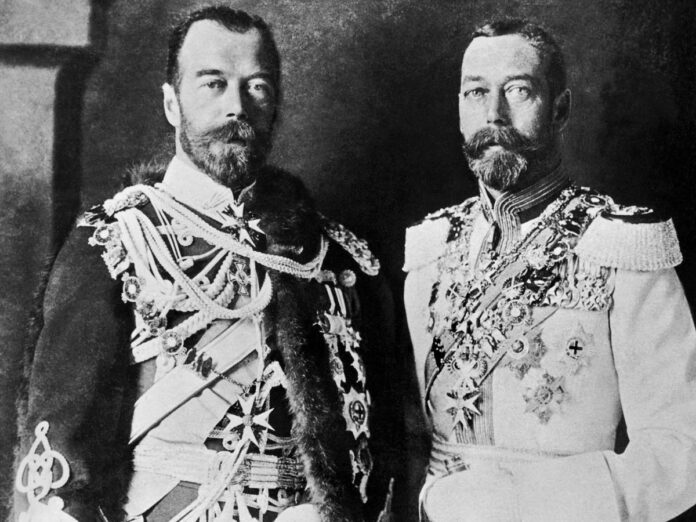AsThe Crown hits our screens once again, viewers may be surprised to see that the show will draw back the curtain on yet another royal family.The fifth season of the wildly popular Netflix show returns on 9 November with an entirely new cast playing members of the British royal family, including Imelda Staunton and Jonathan Pryce as Queen Elizabeth II and the Duke of Edinburgh.The sixth episode of the new season, titled ‘Ipatiev House’, will show how the late Queen’s family was related to the Russian imperial family, the Romanovs, and how their ties impacted the UK’s relationship with Russia.Tsar Nicholas II was the cousin of King George V, who was the Queen’s grandfather. George V’s mother was Alexandra Princess of Wales, the sister of Nicholas’ mother, Dagmar of Denmark. Tsar Nicholar and King George V were known for looking uncannily similar and had a close friendship.Here is everything you need to know about who the Romanovs were and why their deaths were significant for the British royal family.The House of Romanov was the reigning imperial house of Russia, lasting from 1617 to 1917. It ended with the execution of Tsar Nicholas II and his family.Nicholas had married Alexandra Feodorovna, Princess Alix of Hesse, in 1894. Alix was a favourite granddaughter of Queen Victoria and, importantly, was a carrier of a mutant strain of haemophilia that was traced back to Victoria.Together, the couple shared five children: Olga, Tatiana, Maria, Anastasia, and Alexei. Alexei inherited haemophilia from his mother, who tried to help treat his symptoms with the help of the now-infamous self-declared healer and holy man, Grigori Rasputin.A workers’ march in 1905 that descended into violence after soldiers opened fire on the crowd and killed 92 people was the catalyst for the Russian Revolution.Tsar Nicholas II, Princess Alix of Hesse and their childrenNicholas’ popularity continued to decline steeply over the next decade, fuelled by political unrest and discontent among the Russian people that the imperial family were too far removed from their daily lives.After World War I resulted in the deaths of an estimated 1.7m Russians, as well as soaring good prices and supply issues caused by a severe winter, mass protests broke out across the country calling for Nicholas and Alix to step down. The revolution was supported by tens of thousands of soldiers and the country was in chaos.Nicholas had no choice but to abdicate and did so on 2 March 1917. He named his brother, Grand Duke Michael, as the next Emperor, but Michael declined to accept the throne – thus bringing three centuries of the imperial Russian dynasty to an end.While Nicholas and the Provisional Government wanted the Romanovs to go into exile in the UK after his abdication, they ended up imprisoned in the Ipatiev House, home to military engineer Nikolay Nikolayevich Ipatiev.Undated picture of Tsar Nicholas II who was executed in Jekaterinburg by the Bolsheviks 17 July 1918It was here that the Bolsheviks, a far-left revolutionary party that ultimately became the only ruling party in the Soviet Union, killed the Romanovs.On 16 July 1918, the family were woken late at night alongside their four servants and told to get dressed and go to the cellar in the house. They were told they were to be photographed to quash rumours that they had escaped, but were instead killed by armed men.However, prior to their violent deaths, the UK offered the Romanov family asylum in Britain.George V wrote to Nicholas after they were removed from their palace and said: ‘My thoughts are constantly with you. And I shall always remain your true and devoted friend.’But according to author Frances Welch’s 2018 book, The Imperial Tea Party, the offer was withdrawn after the King’s ‘jittery’ private secretary, Lord Stamfordham, expressed concerns that giving the Romanovs asylum would add fuel to the fire of the growing republican movement in the UK.The King is often accused of condemning the Romanovs to their deadly fate after the offer for asylum was withdrawn. But, according to History Extra, it was a misconception that the King was able to offer asylum at all, as his government made no voluntary offer.Instead, it was Pavel Milyukov, the foreign minister of Russia’s Provisional Government, who pushed the British government to offer asylum. A reluctant offer to host the Romanovs ‘for the duration of war only’ was made, but was withdrawn within weeks.The exact reason for withdrawing the offer remains unclear, but it is thought that the King feared that Nicholas II’s reputation as ‘Nicholas the Bloody’ – due to the killing of peaceful protesters in 1905 – would swing the British public’s favour against him.Dr Helen Rappaport, a specialist in late Russian imperial history, also writes that ‘the Romanovs were a political hot potato that no government wished to handle in wartime’, as they were also refused asylum by Norway, Sweden, France and Switzerland.But the King did appear to regret not helping his cousin and his family. Upon hearing of the Romanovs’ execution, he wrote in his diary: ‘Those poor innocent children!’ He also attended a memorial service in July 1918, following the announcement of Nicholas’ death.
Who were the Romanovs and did King George V betray the Tsar?
Sourceindependent.co.uk
RELATED ARTICLES


